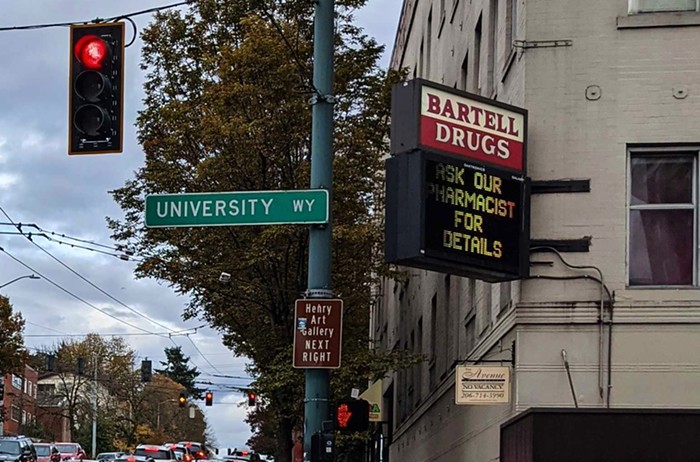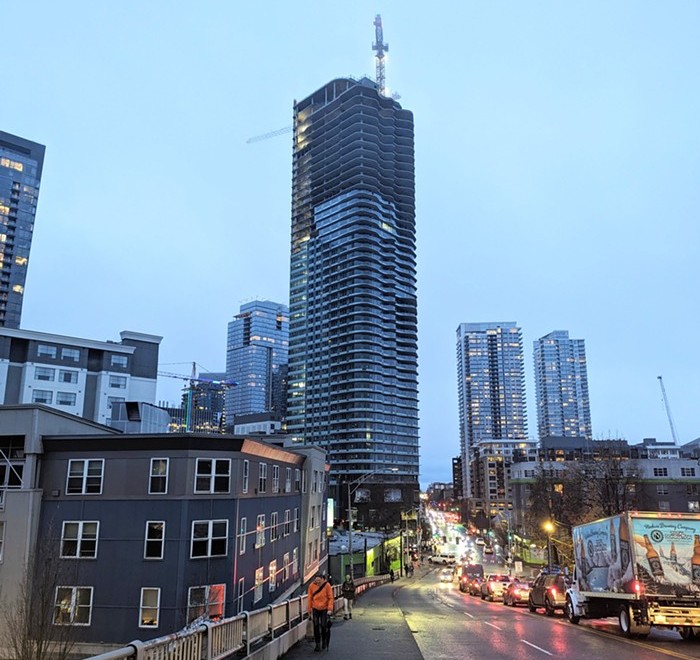
A study conducted by the Brookings Institute found that 53 million Americans between the ages of 18 and 64 (or 44 percent of the workforce) yearly earn a median average of $18,000 (or $10.22 per hour). What this means is that a large section of our society can't afford even small mistakes, let alone major emergencies. It only takes one bad move or shock for a low-wage worker to be irrevocably thrown into a catastrophe. CBS's post about the Brookings report appeared the day after it aired the 60 Minutes episode on Seattle's homeless crisis.
The Brookings report pretty much explains what the host of the 60 Minutes episode, Anderson Cooper, considered a mystery, which could be solved with well-rounded reporting. He interviewed homeless people (all white), a Safe Seattle proponent (white), and the mayor (white again) who authorizes sweeps. (Those sweeps, however, were not mentioned in the episode. Instead, Durkan told Cooper that she's throwing lots of compassion and whatever money is available at the crisis.)
I bring up race here because the Brooking study found that blacks "are overrepresented among low-wage workers." The data in the study also revealed that half of those who earn low wages are the sole breadwinner in a home. To get a sense of the seriousness of this situation, which is socially costly (or, put another way, grossly inefficient), one must keep in mind that the cost of living in America "has climbed 14 percent over the past three years."
But there is more. Many Americans do not know how vast the low-wage population is.

Brookings' researchers write:
The existence of low-wage work is hardly a surprise, but most people—except, perhaps, low-wage workers themselves—underestimate how prevalent it is. Many also misunderstand who these workers are. They are not only students, people at the beginning of their careers, or people who need extra spending money. A majority are adults in their prime working years, and low-wage work is the primary way they support themselves and their families.
This is not surprising because one of the major cultural shifts that occurred with the re-liberalization of economics (also called neoliberation, a return to economic practices and ideas that dominated the second half of the 19th century) in the early 1970s was the disaggregation of the working class and the dissolution of the very concept of class identity. The disaggregation, which also involved breaking the power of unions, led to the atomization of the job market; and the dissolution of class consciousness led to one economic group, the wide and very deep "middle class." A person with an annual income of $250,000 is somehow in the same class as a person with an income of $25,000.
Those outside of the middle class became what the French sociologists Luc Boltanski and Eve Chiapello identified in 1996 as the "excluded." These people have no class. They are instead the recipients of the kind of pity and charity and moralizing that Mayor Durkan is certain is more than enough to address the homeless crisis in her city. But one of the strengths of Anderson Cooper's 60 Minutes episode is that it introduced many Americans to an urban group that Durkan and her popular form of neoliberalism registers as the dysfunctional (i.e. the excluded), but that has, in fact, not been identified by a stage of capitalism determined by a neoliberalism that has become a zombie (walking and talking dead ideas).
"Rent is obscene here. I can't afford it."
Emilee Broll has delivered mail for the Postal Service in Seattle for nearly five years, but she’s been living out of a 42-year-old RV for the last two and a half years. She says rent is too high.https://t.co/iCNGDECVYj pic.twitter.com/4vg4AH1Eat
— 60 Minutes (@60Minutes) December 2, 2019
These are workers who have no fixed place to live. Now, the imagery of the sweeps that dominates the American mind is that they impact only those who are outside (and have made the personal decision to be outside) of the universal class. In this imagery, work even at a fast food restaurant offers an individual with a work ethic access to the universal class. But what we are more and more finding are people outside of the universal class who should be inside of it. An economic hypothesis that can explain this phenomenon does not yet exist. The universities are still dominated by neoclassical thinkers (they only recognize individuals who, in a Darwinian market regulated by price signals, make either good or poor economic decisions). The universities and the media have yet to imagine and represent a group of Americans who do not make obvious poor decisions, but who still end up on the street.

















